— October 29, 2018
Earlier this month, we said that you can think about optimizing for the Amazon buy box in the same way you think about optimizing content for the organic search results. Both situations involve algorithms designed to deliver shoppers (or searchers) the best experiences possible.
The crossover between ecommerce and organic search doesn’t stop there. When it comes to Amazon keyword strategy, you can once again think along the lines of SEO.

This isn’t surprising once you take a step back and recognize that—wait a minute—Amazon is a search engine. True, with a relatively low number of ranking signals, its algorithm is simpler than those of Google and Bing. Nonetheless, Amazon indexes information and uses an array of factors to determine who lands where in the product search results. Sounds like a search engine to me, pal.
In this guide, we’ll explain why keywords are important for your success as an Amazon seller. Then we’ll share four tips you can use to conduct better Amazon keyword research.
Let’s. Get. It.
What’s the deal with Amazon’s search algorithm?
First of all—rude. It has a name, you guys: A9.
Secondly, I think I got a little too excited in the intro. Yes, it’s super helpful to think of Amazon as a search engine. At the same time, though, it’s crucial to remember that Amazon is an online marketplace. It’s a place to sell stuff.
Amazon really, really wants to sell stuff.
I share this obvious information because it’s the driving factor behind A9. Amazon organizes the product search results in order to sell as much stuff as possible.
Given that, it comes as no surprise that the most relevant, high-converting products are the ones that win the top spots. A high-converting product, as you know, is one that actually convinces prospects to buy after they’ve clicked through to the product details page.

A spooky example of an Amazon product details page.
For the purposes of this blog post, we’re mostly concerned with the first adjective: relevant.
Relevant to the search query, that is. There are reasons Amazon doesn’t show you nineteenth-century porcelain dolls when you search for dog food: one, dolls are vessels for demonic spirits; two, dolls have nothing to do with dog food. Nobody wants to use a search engine that populates the results with irrelevant products.
Amazon knows this, and A9 operates accordingly.
How are Amazon keywords related to product relevance?
Uh, how are s’mores Pop-Tarts related to human health?
Exactly. Amazon keywords, like s’mores Pop-Tarts, are foundational. They’re essential. Without strong keyword practices, the products you sell on Amazon are irrelevant.
When you optimize a blog post, you optimize for a keyword. If it’s a list of 2018 holiday shopping statistics, you better make sure “holiday shopping statistics 2018” shows up in your URL, your page title, your meta description, and the like.
You do this to ensure that your blog post is considered relevant when somebody searches for information regarding holiday shopping statistics.
Optimizing an Amazon product listing is no different.
Amazon keywords and your product title
As you may have already intuited, the title of your product is pretty important to its success in the Amazon search results.
In fact, from a keyword perspective, it’s probably the most important part of your listing.
Think about your behavior as an Amazon consumer for a moment. When you search for a product, do you click on each result and carefully inspect the ins and outs of each product details page?
If you do, please be a responsible citizen and turn yourself in to the police.
Normal people look for shortcuts all the time. When shopping on Amazon, that means scanning product titles—often only the first part of product titles—in search of the one most relevant to the consumer’s needs.
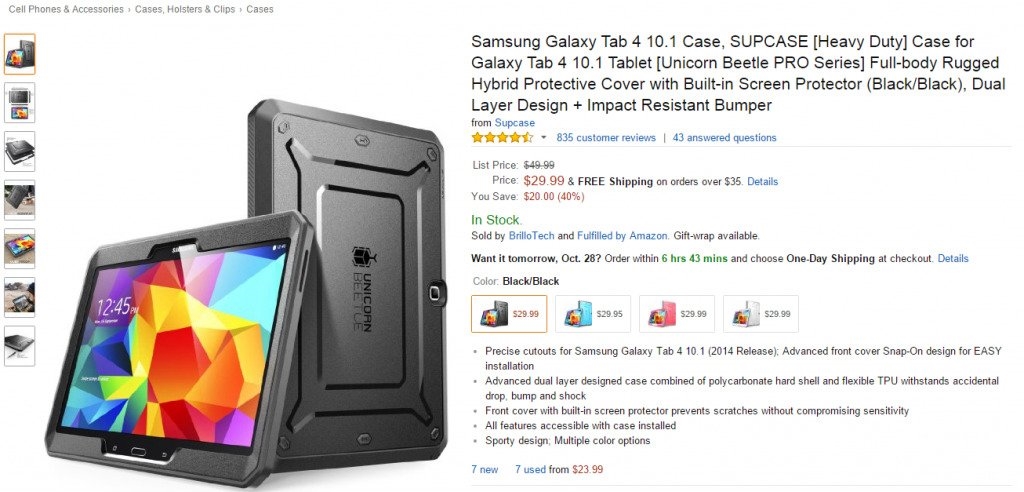
Would you read the entire title?
Say it with me, folks: put your most important keywords in your product title, and put your very most important keywords at the beginning of your product title.
Brand name. Product type. Key Features. Size. Color. Quantity.
These are what consumers scan for. Make their lives easy.
Of course, you’re trying to appease the algorithm, too. Regardless of how you look at it, Amazon keywords are essential to your product titles.
One last thing: keep screen size in mind. Your product titles are going to look different depending on the device your prospect is using to browse Amazon. This is yet another reason to put your most crucial keywords first.
Amazon keywords and your product details
The product details page is your opportunity to outline all the best features and benefits of your product in a series of concise bullet points.
It’s also the place to use the keywords you couldn’t fit in the product title.
Product details optimization is important for a couple reasons. Primarily, this is a great chance to nudge the prospect closer to clicking “Add to Cart.” Your outstanding product title brought her here, and now your highly informative bullet points will secure the conversion.
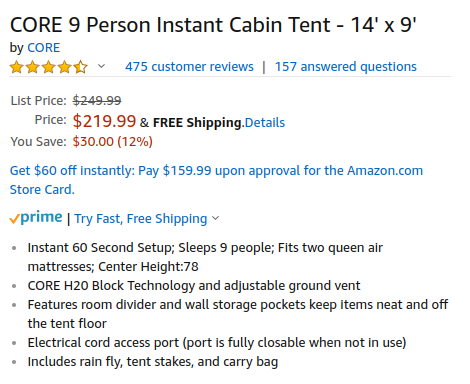
Remember that product conversion rate has a huge influence on the order of Amazon search results. If you slack on your product details page, your bounce rate will go through the roof, and you’ll fall down the search results into ecommerce oblivion.
Why does your prospect need to buy your product right now? Why shouldn’t she get it from another seller? What makes your product unique? These are the questions you need to answer on the product details page.
You also need to optimize your product details page because A9 will index your keywords and use them to inform the ordering of the search results. The logic here is no different from the logic behind your product title—you’re using keywords that make your product relevant to the queries prospective customers are searching.
Amazon keywords and your seller account
Perhaps you’ve heard of “hidden keywords.” Maybe you’ve stumbled across something called “search terms.” Each is a reference to the keywords you’re permitted to enter at the backend of your Amazon seller account.
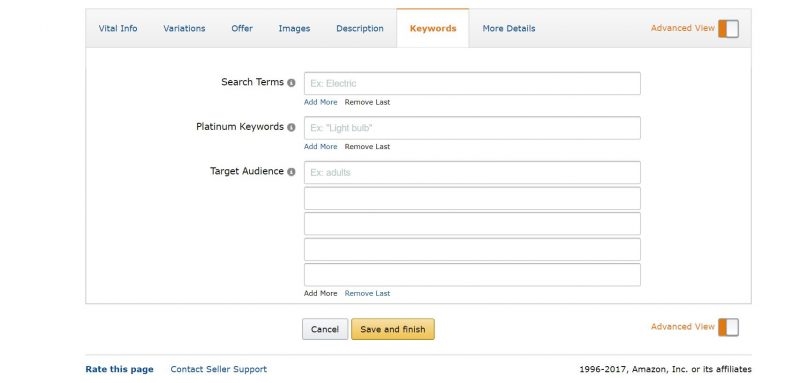
Via Seller Lift.
Basically, hidden keywords are your opportunity to give Amazon more information about your product—information that consumers won’t see. To draw a parallel to content creation, alt text allows you to give Google more information about an image to help with indexation.
A hidden keyword is a lot like alt text—but for a product rather than an image.
Let’s say you’re selling homemade bumper stickers that advocate for Sen. Bernie Sanders. Through your keyword research, you find that a good number of Amazon users search the query “bumper stickers for liberals.” You’ve dedicated your product title to your brand name, the materials you use, the dimensions of the stickers, and the quantity. You’d like to cash in on the searches for left-leaning automobile accessories, but you don’t have the space.
So, now what?
You enter the keyword “bumper stickers for liberals” into the backend of your seller account!
Keep in mind that—as of August 2018—you only have 250 characters for backend keywords per product. Avoid repeating information conveyed in your product title and bullet points, as doing so will only waste this highly valuable real estate.
To that same end: don’t use commas, semicolons, or any other punctuation to separate your backend keywords. This, like repeated information, is an unnecessary waste of characters.
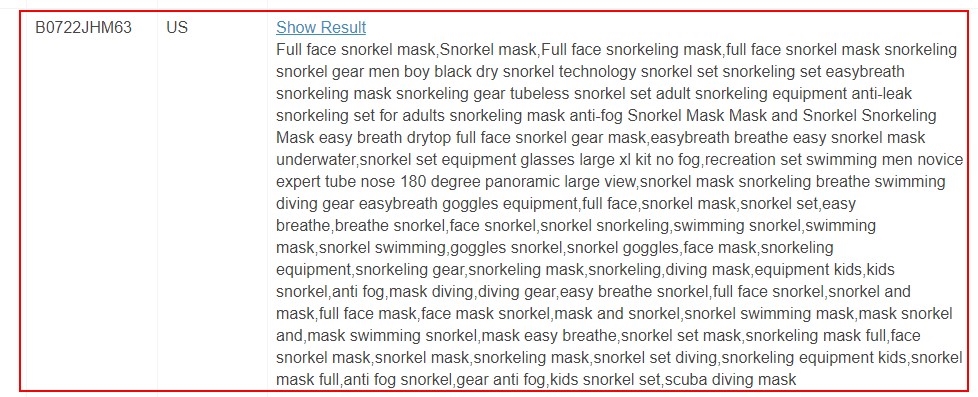
Unnecessary punctuation makes this an example of bad practices. Via AMZDataStudio.
By reducing the character limit to 250, Amazon has indicated that it’s taking backend keywords more seriously. The company doesn’t want sellers stuffing the character fields with irrelevant information and competitors’ brand names. As such, if you master your backend keywords across your product catalogue, you can expect a considerable boost in the search rankings!
How do I conduct Amazon keyword research?
If the increasingly awesome Mission Impossible film series has taught us anything, it’s that going rogue pays off. If Ethan Hunt breaks protocol to save the world, it follows that you should break protocol to dominate Amazon, right?
Wrong. Ethan Hunt is a fictional action hero and under no circumstances should you emulate him in your pursuit of ecommerce success.
If you want to succeed on Amazon, you need to play by the book. And that means conducting keyword research.
The goal? To compile a comprehensive list of keywords for each product, thus maximizing the number of search queries that trigger your product listings and making your inventory as visible as possible in the Amazon search results.
Here’s how.
1. Target products that complement your product.
As you may have learned in an introductory economics course, compliments are products that consumers frequently buy together.
To put it in Amazon terms: everything you see under “Frequently bought together” is a complement to the product displayed on the details page.
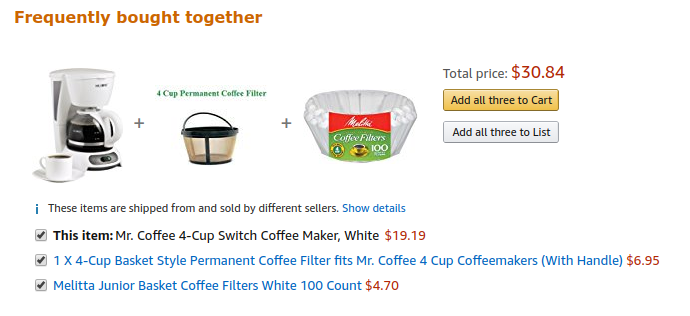
By targeting complements to your product—in the bullet points, in the product description, or in the hidden keywords—you make your product visible to people who aren’t directly looking for it and whose search behavior indicates that they may be interested.
In some cases, complements are intuitive. If you sell peanut butter, for example, you’re well aware that your prospects are also in the market for jelly, marshmallow fluff, and bread.
In other cases, however, you’ll have to do some research. Head to your competitors’ product details pages and see what customers are buying in tandem. That should give you a good idea of the complements you want to target.
2. Type into the Amazon search bar and look at the keyword suggestions.
When you begin to enter a search query, Amazon suggests products other consumers frequently search for.

This is a great tactic because it gives you a quick, free snapshot of how your prospects actually use Amazon. Yes, there are keyword research tools that give you tons of valuable, in-depth data—and we’ll get to those—but a lot of ‘em ain’t free.
After meticulously combing through the suggested queries (i.e., entering the type of product you sell followed by different letters of the alphabet), you’ll have yourself a strong list of initial keywords to build on.
3. Look at what you’re ranking for on Google.
If you sell on a website of your own in addition to Amazon, this one is unique to you.
Consumers are more likely to begin product searches on Amazon than on Google. To be precise, whereas 47 percent of online shoppers begin on Amazon, 35 percent begin on Google.
Often, you’ll hear this statistic with the implication that Google is the place where ecommerce businesses go to die. But, hold the phone…
35 percent! That’s millions of online shoppers. Millions of online shoppers are actively looking for products—including yours—on Google. When you think of it that way, incorporating Google into your keyword research strategy sounds like a no-brainer. And it is.
Use Search Console or a tool like SEMrush to see if your website is scoring page one results for any high-volume search queries. Then, target those queries as keywords across your Amazon product listings and seller account!
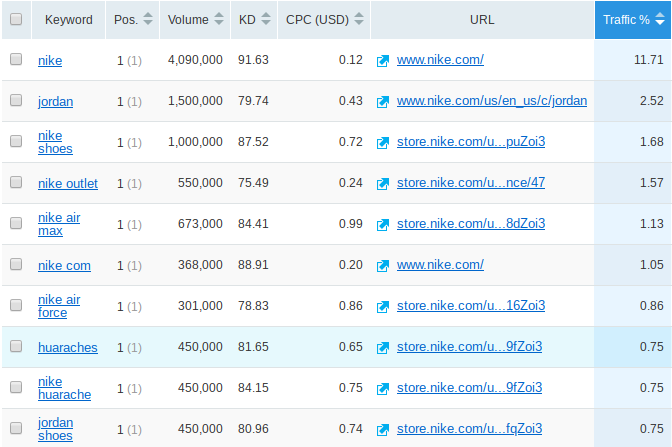
SEMrush’s organic search position data for nike.com.
This is a doubly effective strategy because it allows you to build brand (or product) awareness with the prospects who take a little longer to convert. Imagine this: a shopper begins on Google, lands on your website, and pokes around a bit. Then, a few days later, when he’s ready to make a purchase, he sees your product in the top Amazon results. Immediately recognizing it from that awesome site he browsed earlier in the week, he clicks on your product and converts!
Google and Amazon can work together to your advantage. Make it happen!
4. Use a keyword research tool.
As much as we like those homegrown strategies, it would be foolish to not incorporate some kind of keyword research tool into your approach.
Here at WordStream, we offer a rather handy keyword tool—completely free of charge. Use it to get an idea of how consumers search for a product like yours, how often they’re conducting these searches, and how much of a challenge it will be to stand out amongst your competitors. It’s a safe bet that keywords with high volume (and high value) on Google will be worthwhile to target on Amazon.
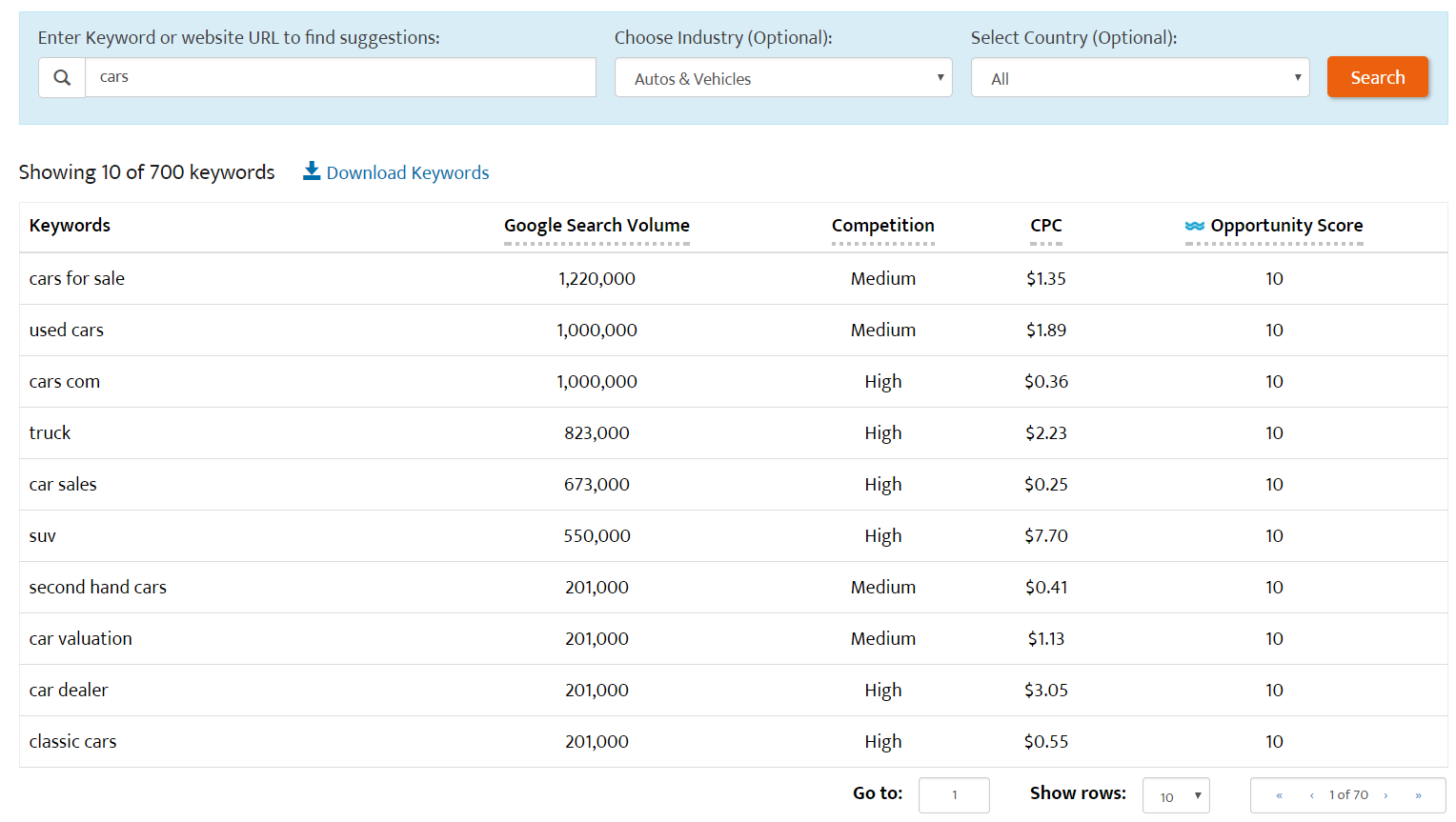
Google’s Keyword Planner is free to anyone with a Google Ads account. If you open your account and navigate to the tools drop-down menu, you’ll see Keyword Planner as an option. From there, you can search as many keywords as you please and see how frequently they’re searched on a monthly basis—as well as the intensity of the competition.
If you’d like to conduct research that’s specific to Amazon, Keyword Tool has an Amazon keyword planner. This keyword planner uses data from the Amazon autocomplete or search suggestion feature and generates a list of long-tail keywords to consider. Sellics also offers a free Amazon-specific tool called Sonar. With it, you can access a keyword’s monthly Amazon search volume as well as the related keywords and the relevant products. Thanks to the latter feature, Sonar is a not only a research tool, but a competitive research tool.
Go forth and succeed!
With the right Amazon keyword research strategy, you’ll make your products visible to more relevant, high-value prospects than ever before. Plus, thanks to well-optimized product titles and product details pages, you’ll turn that boosted visibility into clicks and conversions at an impressive rate.
And it’s a positive feedback loop, too. A good keyword research ethic yields higher visibility. Higher visibility and excellent product titles yield more clicks. More clicks and outstanding product details pages yield more conversions. More conversions yield higher search rankings, and on and on we go.
What are you waiting for? Get that magical loop of ecommerce success going today!
Digital & Social Articles on Business 2 Community
(91)







